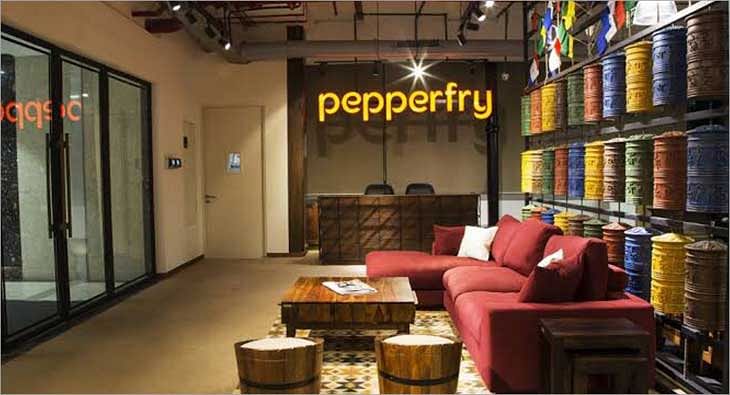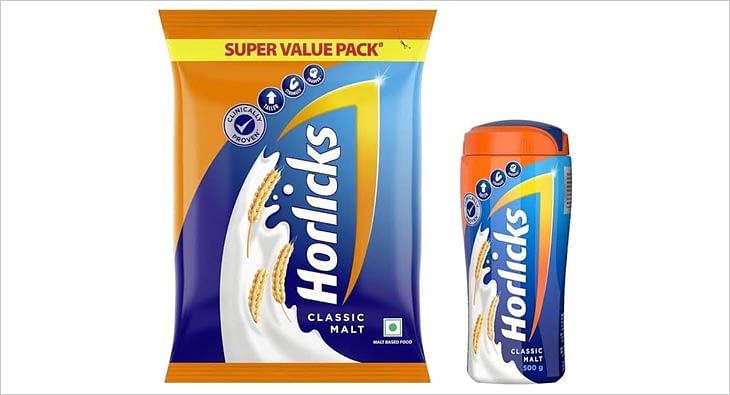Pepperfry closes FY19 on the back of advertising spends worth Rs 170 crore
The online retailer upped its ad spends by over 88% in FY19 when compared to the last fiscal

For online furniture and home products marketplace Pepperfry, one of its biggest expenses, almost 43.7% of total expenses was advertising and promotions in FY19. The company upped its ad spends by over 88% in FY19 when compared to Rs 90.78 crore in FY18, according to data accessed from business intelligence platform-Tofler.
The brand reported its revenues for the financial year 2018-19 as Rs 207 crore, a 47 % jump since the last financial year. The company further reported a net loss of INR 183 cr during the same fiscal. This is a 72 % increase from the last financial year. The company’s total expenses for the fiscal were reported as Rs 390 crore.
To be sure, Pepperfry has been quite aggressive in terms of its marketing. The company which started by focusing heavily on television is now seen capitalising big on digital. “In 2020, a prominent trend will be the utilisation of machine learning to filter audiences for targeted campaign outreach. Implementation of machine learning in campaigns will help brands to improve both targeting and messaging by marketing to micro-segments with very well-identified needs or interests. At Pepperfry, too, we have begun dabbling in these areas in a more systematic manner, which has led to higher rates of traction on key metrics, therefore, I think that these practices will be wide-spread among marketers in 2020,” Kashyap Vadapalli, CMO, Pepperfry recently shared with exchange4media.
At the acquisition stage, the retailer runs performance marketing campaigns targeting potential consumers through varied mediums. For conversion, Pepperfry utilises various tools such as cash-backs and coupons, which aid in pushing the consumer towards the transaction. The brand also leverages push notifications, emailers and traditional campaigns and keeping consumers engaged through content-led pieces which integrate the brand into a plotline.
Since its inception, Pepperfry has chosen to use content marketing with platforms such as Miss Malini, Girlyapa, TVF, Dice Media, among others which helped the brand build its digital presence. Traditional mediums, too, play an essential role in the marketing mix wherein a big portion of the spends of the traditional bucket is allocated to television, especially for seasonal promotions, such as Diwali and Independence Day, etc. Radio and outdoor advertising also play the role of support mediums in large campaigns.
Founded in January 2012, Pepperfry has raised $197.5 million so far and is backed by Goldman Sachs, Bertelsmann India Investments, Zodius Capital, State Street Global Advisors and Norwest Venture Partners.
Read more news about Marketing News, Advertising News, PR and Corporate Communication News, Digital News, People Movement News
For more updates, be socially connected with us onInstagram, LinkedIn, Twitter, Facebook, Youtube, Whatsapp & Google News
About 60% Instagram influencers in India have fake followers: Report
As per a media report, influencer marketing platform KlugKlug has found that only 2.48 million profiles out of the 8 million have ‘high-quality’ followers
Two of three Instagram influencers in India have more than 60 per cent fake followers, a report by influencer marketing platform KlugKlug shows.
This is particularly true for the beauty and fashion sector, the report noted.
Other countries that have influencers with fake followers are Brazil, the UAE and Indonesia.
As per media reports, such Instagram fake followers can be roped in for as little as Rs 10 to a high of Rs 1,000.
According to Klug Klug India, only 2.48 million profiles out of the 8 million have high-quality followers.
A number of other categories have also been buying fake followers, media reports have noted.
As per a media expert, quoted in the reports, brands are finding it difficult to identify and curb the menace of fake followers and bots.
In a recent setback for influencers the Central Consumer Protection Authority (CCPA) has said those promoting activities like gambling and betting are equally liable as the companies promoting the same.
15% consumers enhance their user experience through virtual assistants: Kantar report
According to Soumya Mohanty, Managing Director & Chief Client Officer- South Asia, Insights Division, Kantar, less than 1% of ads get tested due to lack of time
Marketing data and analytics firm Kantar has unveiled a report that studies the burgeoning AI market to dish out actionable insights for marketers. Within AI, virtual assistants are the fastest growing segment. The report noted that 15% consumers enhanced their ‘user experience through virtual assistants’. This segment is the fastest growing at 27% YoY.
According to the study, while ‘fitness’ and ‘social media’ apps are amongst the leading categories, driving AI adoption (with an average of 2.3 AI led features embedded in these applications), segments like ‘BFSI’, ‘job search’ and ‘short video’ apps are relatively slow in AI adoption, with an average of 1.2 features each. Entertainment apps, digital commerce and pharmacy apps stand somewhere in the middle with 2.0 & 1.8 AI features being adopted, respectively.
Additionally, the report said that while 90% of marketing and sales leaders think their organisations should be using AI “often”, 60% said their organisations “rarely or never” do. Speaking to exchange4media, Soumya Mohanty, Managing Director & Chief Client Officer- South Asia, Insights Division, Kantar highlighted that currently there are a lot of organisations who know that there is something called AI, but haven’t yet figured out how it could help them holistically.
“A lot of the AI just gets used for efficiency purposes, so repetitive tasks get automated,” Mohanty pointed out. Data also plays a big role in why certain organisations are struggling with how to use AI.
For instance, Mohanty explained that in segments like D2C, telecom etc. there is a lot of primary or first-party data. So being able to leverage AI also gets easier. “It's the traditional large sort of FMCG type companies where data sits in silos. You don't really have one single source of data where it's a little difficult to use the full power of AI, because the full power of AI also needs a lot of data sitting in a structure that you can use,” she added.
So, can AI help marketers have a unified view of data? No, says Mohanty. “AI does not help marketers get a unified view of data. Once you have data in a unified way, AI can help you do a lot more with that data.”
According to her, organisations today need to have good, strong data warehousing. “It needs to make sense because a lot of the silos are also because everybody owns one part of it. A lot of people have their own analytics teams internally, so there are a lot of agendas and stakeholders. And then we say data is in silos because fundamentally, when you're doing something internally, different people have different stakes in it,” Mohanty added.
Puneet Avasthi, Senior Executive Director, South Asia, Insights Division, Kantar shared that most organisations are now heavily investing in creating first-party data sets. “Companies that have first party data about their consumers and transactions or interactions that they have with the brand are going to be able to leverage that more effectively to create sharper profiles for the brand as such for the consumer and build relevant recommendations at the right moments.
Panning out she also highlighted how AI can be leveraged to enhance market research and make it more accessible, a part of which Kantar is itself involved in. “A lot of times people say that we can't test an ad because we don't have time. So less than 1% of advertising gets tested and just gets put out. Does it work when it gets put out? It is the question the audience should answer, because so many times, it backfires,” Mohanty shared. Apparently, digital particularly doesn't get tested because organisations just do a/b testing and leave it at that.
Speaking of preferred use cases of AI, Avasthi added that various businesses and brands are looking at creating an experience for the brand that is in line with the brand's architecture and progress across all touch points. “That is something that the AI engines that are working behind can ensure, that all such interactions are consistently delivered across different virtual assistants or chatbots that are available to the consumer,” he said.
The other use case, according to Avasthi, is ensuring that there is greater visibility for the brand in the digital sphere as such, through various recommendation engines, when a certain need is being looked for and to throw up the right kind of information about the brand so that the brand message is amplified in the mind of the consumers.
Among other insights from the Kantar AI report is that 88% consumers used AI based algorithms which analysed their preferences, behaviours, and interests to create personalised recommendations for tailored experiences. This segment grew at 6 % YoY. At 21%, ‘smart home automation’ is a smaller segment but growing at 25% YoY.












 Share
Share
